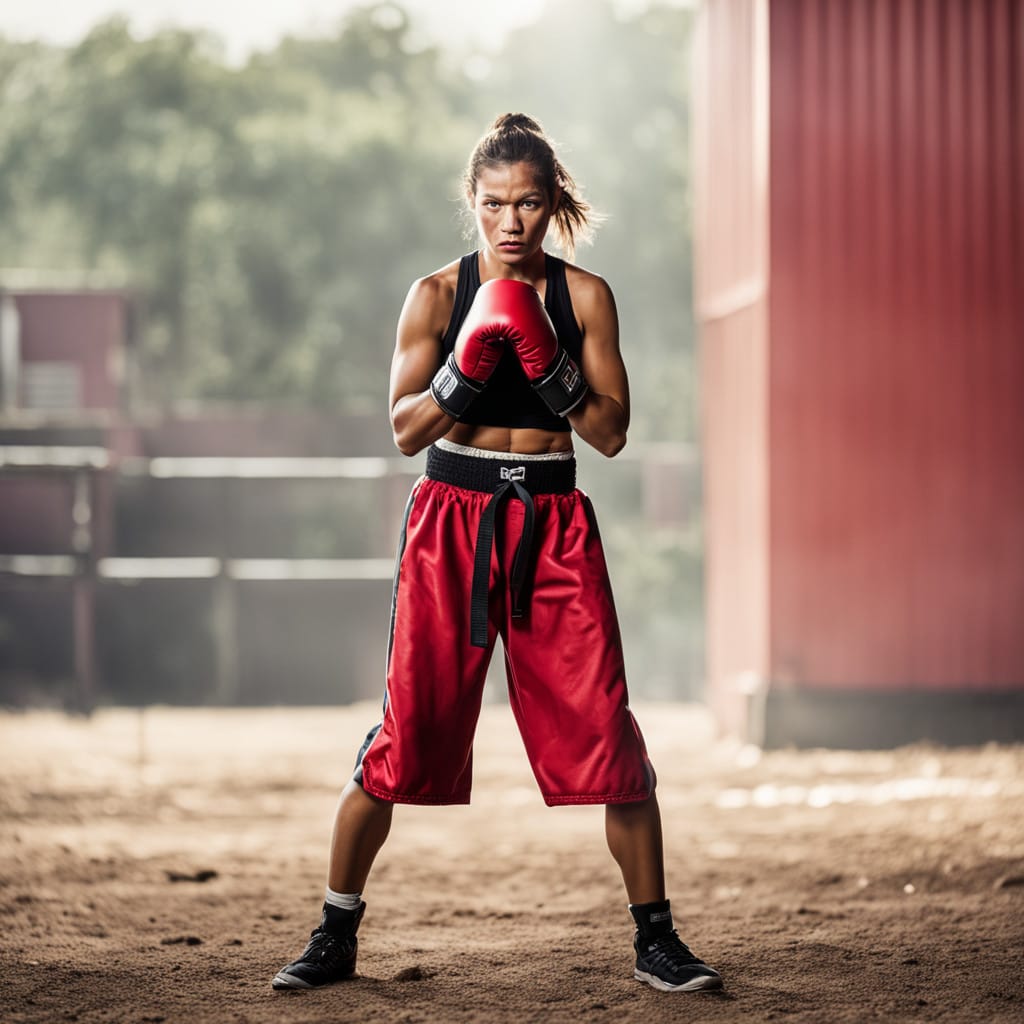Kickboxing is a dynamic and engaging sport that has captivated enthusiasts worldwide. Known for its combination of kicks and punches, it offers a unique blend of martial arts techniques and cardiovascular endurance. It’s not just a sport but a lifestyle for many, combining fitness with the discipline of martial arts. As it gains popularity across the globe, understanding its roots, rules, and impact becomes essential. In this blog post, we will explore the rich history of Kickboxing, its global popularity, the structure of amateur and professional leagues, its significance both politically and socially, and the rules that govern it. Whether you’re a seasoned athlete or a curious beginner, its multifaceted nature provides something for everyone.

The Origin and History of Kickboxing
Kickboxing, as we know it today, is a relatively modern sport, but its roots stretch back centuries. The origins of it can be traced to traditional martial arts practiced in Asia, particularly Muay Thai from Thailand, Karate from Japan, and Taekwondo from Korea. These ancient combat styles emphasized the use of both fists and feet. This layed the groundwork for what would eventually become Kickboxing.
In the 1960s, it emerged as a distinct sport in Japan. Martial artists sought to create a hybrid style that combined the striking techniques of Karate with the full-contact aspects of Muay Thai. Osamu Noguchi, a Japanese Karateka, and Tatsuo Yamada, a Muay Thai practitioner, were instrumental in developing this new sport. They wanted to create a fighting style that allowed for the full range of striking techniques while maintaining the rigorous training and discipline associated with traditional martial arts.
The first official Kickboxing event was held in Osaka, Japan, in 1966. The event was a success, and the sport quickly gained popularity in Japan. From there, it spread to the United States in the 1970s. It was popularized by martial artists such as Bill Wallace, Joe Lewis, and Benny Urquidez. These pioneers helped to establish Kickboxing as a recognized sport in the West. It soon began to gain a following among both practitioners and spectators.
In the 1980s and 1990s, Kickboxing’s popularity continued to grow, particularly in Europe and North America. Various organizations and governing bodies were established to promote and regulate the sport. This led to the creation of different Kickboxing styles and rule sets. The World Kickboxing Association (WKA) and the International Sport Kickboxing Association (ISKA) were among the first organizations to set standardized rules for the sport, ensuring consistency in competitions around the world.
Kickboxing’s history is a testament to its adaptability and appeal. It has evolved from a blend of traditional martial arts into a global sport that attracts millions of participants and fans. The sport’s history is rich with innovation, and its future continues to look promising as it grows in popularity.
Global Popularity of Kickboxing
It has achieved global recognition, with millions of people participating in the sport across various continents. Its appeal lies in its versatility, combining the best elements of martial arts, fitness, and competitive sport. Countries such as Japan, the United States, and Thailand are known for their strong Kickboxing cultures. The sport has also gained significant popularity in Europe, South America, and Africa.
In Japan, where it originated, the sport remains a prominent part of the martial arts community. Japanese Kickboxers are known for their technical skill and discipline, often blending traditional Karate techniques with the aggressive striking style of Muay Thai. Japan hosts numerous Kickboxing events, attracting both domestic and international fighters.
Thailand, the birthplace of Muay Thai, also plays a crucial role in the global Kickboxing scene. Many Kickboxers from around the world travel to Thailand to train in Muay Thai. It is considered one of the most effective striking arts. Thai fighters often compete in Kickboxing events, bringing their unique style and experience to the sport.
In the United States, it gained popularity in the 1970s and 1980s, largely due to the efforts of martial artists who wanted to create a full-contact sport that allowed for both kicks and punches. American Kickboxing, as it is often called, has its own set of rules and regulations, distinguishing it from other styles. The sport continues to thrive in the U.S., with many gyms offering Kickboxing classes for fitness and self-defense.
Europe has also embraced it, particularly in countries like the Netherlands. Dutch Kickboxers are known for their aggressive and powerful fighting style. The Netherlands has produced some of the most successful Kickboxers in the world, and the sport enjoys a strong following there. Other European countries, such as France and Italy, have also developed their own Kickboxing communities.
In South America,it has seen significant growth, especially in Brazil and Argentina. These countries have produced talented Kickboxers who compete internationally, contributing to the sport’s global appeal. Similarly, in Africa, nations like South Africa and Morocco have established strong Kickboxing traditions, with fighters gaining recognition on the world stage.
The global popularity of Kickboxing is a testament to its universal appeal. Whether for fitness, self-defense, or competition, people from all walks of life are drawn to the sport. Kickboxing’s global reach ensures that it will continue to grow and evolve, attracting new participants and fans from around the world.
Amateur Kickboxing: Youth and Schools
Amateur Kickboxing plays a crucial role in the development of the sport, providing a platform for young athletes to learn and compete. Many countries have established Kickboxing programs in schools and youth organizations, encouraging children and teenagers to take up the sport. These programs emphasize discipline, respect, and physical fitness, making it an excellent choice for youth development.
In Japan, it is often introduced to children at a young age. Many schools offering classes as part of their physical education curriculum. These classes teach the basics of Kickboxing, including proper stance, striking techniques, and defensive maneuvers. As children progress, they have the opportunity to compete in amateur tournaments, which are held regularly across the country.
In the United States, it is commonly taught in martial arts schools and community centers. Youth Kickboxing programs focus on building confidence, improving physical fitness, and teaching self-defense skills. Many schools also offer competitive Kickboxing programs, allowing young athletes to participate in regional and national tournaments. These competitions are usually governed by organizations such as the World Kickboxing Association (WKA) and the International Sport Kickboxing Association (ISKA). These organizations set rules and regulations for amateur events.
In Europe, countries like the Netherlands and France have well-established amateur Kickboxing circuits. These programs often start at the grassroots level, with children participating in local clubs. They then progress to regional and national competitions. European Kickboxing organizations, such as the World Association of Kickboxing Organizations (WAKO), play a significant role in promoting and regulating amateur Kickboxing, ensuring that young athletes have opportunities to compete and develop their skills.
In South America, youth Kickboxing is gaining popularity, particularly in countries like Brazil and Argentina. These nations have established Kickboxing academies and clubs that cater to young athletes, providing them with the training and support needed to succeed in the sport. Amateur competitions are also held regularly, giving young fighters the chance to showcase their abilities and gain valuable experience.
Amateur Kickboxing is not only a stepping stone to professional competition but also a valuable tool for personal development. Through the sport, young athletes learn important life skills such as discipline, perseverance, and respect for others. As more schools and organizations around the world embrace it, the sport’s future looks bright, with a new generation of athletes ready to take it to the next level.
Professional Kickboxing Leagues
Professional Kickboxing has grown into a global phenomenon, with numerous leagues and organizations promoting the sport at the highest level. These leagues attract top fighters from around the world, offering them the opportunity to compete on an international stage. The most prominent professional Kickboxing leagues are known for their high-caliber events, skilled athletes, and passionate fan base.
One of the most well-known professional Kickboxing organizations is Glory Kickboxing, which was founded in 2012. Glory has quickly become one of the premier Kickboxing leagues in the world, hosting events in various countries and featuring some of the sport’s top fighters. The league is known for its fast-paced, action-packed fights, and it has helped to elevate Kickboxing’s profile globally.
Another major organization is K-1, which was established in Japan in 1993. K-1 is credited with popularizing it on a global scale, particularly in the 1990s and early 2000s. The league’s tournaments, known for their knockout finishes and thrilling matches, have attracted fighters from diverse martial arts backgrounds. K-1’s influence on the sport is undeniable, and it remains a key player in the Kickboxing world.
In addition to these organizations, there are several other prominent Kickboxing leagues around the world. In Europe, Enfusion and Superkombat are well-known leagues that host events featuring top European fighters. These leagues have helped to establish Europe as a hotbed for Kickboxing talent, producing numerous champions and fan favorites.
In North America, Bellator Kickboxing has made a name for itself by hosting events alongside Bellator MMA, one of the leading mixed martial arts organizations. This collaboration has helped to introduce Kickboxing to a broader audience, particularly in the United States. Bellator Kickboxing events feature some of the best fighters from around the world, and the league has become a significant player in the sport.
Other regions, such as South America and Africa, have also seen the rise of professional Kickboxing leagues. These organizations, while not as globally recognized as their counterparts in Japan, Europe, and North America, play a crucial role in promoting the sport and providing opportunities for fighters in their respective regions.
The growth of professional Kickboxing leagues has contributed to the sport’s increasing popularity and visibility. These leagues provide a platform for the best Kickboxers to showcase their skills on an international stage, while also attracting new fans and participants to the sport. As professional Kickboxing continues to expand, these leagues will play a vital role in shaping the future of the sport, ensuring that it remains a dynamic and exciting form of competition.
The Political and Social Significance of Kickboxing
Kickboxing, like many sports, transcends the boundaries of the ring, having significant political and social implications. Throughout its history, it has been more than just a competitive sport; it has served as a vehicle for cultural exchange, a symbol of national pride, and a platform for addressing social issues.
In Japan, where modern Kickboxing originated, the sport has played a role in the country’s cultural identity. The blending of traditional martial arts with new fighting techniques in the 1960s represented a fusion of old and new, reflecting Japan’s broader societal changes during that period. Kickboxing became a symbol of modern Japanese martial prowess, showcasing the nation’s ability to innovate while respecting its traditions.
Similarly, in Thailand, Muay Thai—a significant influence on Kickboxing—holds deep cultural significance. As Thailand’s national sport, Muay Thai is more than just a combat sport. It is a part of the country’s heritage and is often associated with national pride. As Kickboxing has incorporated elements of Muay Thai, it has also carried forward this cultural significance, particularly in regions where Muay Thai is revered.
In the United States and Europe, Kickboxing has sometimes been seen as a way to bridge cultural gaps and bring people together. The sport’s popularity among diverse communities has helped to promote inclusivity and mutual respect. In some cases, Kickboxing has been used as a tool for social change, providing opportunities for at-risk youth to learn discipline, build confidence, and develop a sense of purpose. Programs that teach Kickboxing in underserved communities often emphasize values such as respect, perseverance, and self-control, helping to instill positive behaviors in young people.
The political significance of Kickboxing has also been evident in its use as a tool for diplomacy. In some instances, international Kickboxing events have been organized to foster goodwill and understanding between nations. These events bring together fighters from different countries, promoting cultural exchange. This highlights the shared values of discipline, respect, and sportsmanship that underpin the sport.
Furthermore, Kickboxing has sometimes been at the center of political controversies, particularly regarding the regulation and safety of the sport. Debates over the use of protective gear, the rules governing bouts, and the regulation of the sport by various governing bodies have all had political dimensions. These discussions reflect broader societal concerns about safety, health, and the role of combat sports in modern society.
Kickboxing’s political and social significance extends beyond the ring. As the sport continues to grow, it will likely play an increasingly important role in shaping cultural identities, promoting social change, and influencing political debates.
The Rules of Kickboxing
The rules of Kickboxing can vary depending on the specific style and organization. However, there are general guidelines that most competitions follow. These rules are designed to ensure fairness and safety while allowing fighters to showcase their skills.
1. Ring and Attire: Kickboxing matches are typically held in a boxing ring, although some competitions may use a different setup. Fighters wear gloves, mouthguards, shin guards, and groin protectors. Depending on the specific competition, fighters may also wear headgear.
2. Rounds and Time Limits: A standard Kickboxing match consists of three to five rounds, with each round lasting two to three minutes. There is usually a one-minute rest period between rounds. The length and number of rounds can vary depending on the level of competition and the governing body.
3. Scoring: Scoring in Kickboxing is typically based on the effectiveness of strikes, with judges awarding points for clean hits, combinations, and aggression. Kicks, punches, and knee strikes are all allowed, and fighters can score points for strikes to the head, body, and legs. In some styles, strikes to the groin or back are prohibited. Judges also consider factors such as ring control, defense, and overall dominance when scoring a bout.
4. Legal Techniques: Kickboxing allows a wide range of striking techniques, including punches, kicks, and knee strikes. Depending on the specific ruleset, fighters may be allowed to use elbow strikes, though these are often prohibited in amateur competitions. Clinching, or holding an opponent to deliver strikes, is allowed in some forms of Kickboxing but is typically limited in duration and scope.
5. Illegal Techniques: Certain techniques are considered illegal in Kickboxing and can result in penalties or disqualification. These may include strikes to the back of the head, throat, or groin; intentional headbutts; biting; and excessive holding. Fighters are also prohibited from using throws or grappling techniques that are common in other martial arts like judo or wrestling.
6. Knockdowns and Knockouts: A knockdown occurs when a fighter is knocked to the canvas as a result of a legal strike. The referee will then administer a count, giving the downed fighter a chance to get back on their feet. If the fighter is unable to continue within the count, the bout is stopped, and the other fighter is declared the winner by knockout (KO). If a fighter is knocked down multiple times in a round, the referee may stop the bout to protect the fighter’s safety.
7. Fouls and Penalties: Fouls in Kickboxing can result in warnings, point deductions, or disqualification. Referees are responsible for enforcing the rules and ensuring the safety of both fighters. If a fighter commits a foul, the referee may stop the action and issue a warning or deduct points. Repeated fouls can lead to disqualification.
8. Victory Conditions: A Kickboxing match can end in several ways, including knockout (KO), technical knockout (TKO), decision, or disqualification. A knockout occurs when a fighter is rendered unable to continue by a legal strike. A technical knockout is declared if the referee stops the fight due to one fighter being unable to defend themselves. If the match goes the distance, the judges’ scorecards determine the winner. A disqualification occurs if a fighter repeatedly violates the rules or commits a severe foul.
The rules of Kickboxing are designed to create a fair and competitive environment while prioritizing the safety of the fighters. Understanding these rules is essential for both participants and spectators, as they shape the strategies and outcomes of the matches.
Conclusion
Kickboxing is a sport that combines the best elements of martial arts and competitive fighting. Its rich history, global popularity, and structured rules make it an exciting and challenging discipline for both amateur and professional athletes. From its origins in Japan to its current status as a global phenomenon, Kickboxing continues to evolve, attracting new participants and fans worldwide. Whether for fitness, self-defense, or competition, Kickboxing offers something for everyone, making it a truly universal sport. As the sport continues to grow, its impact on society, politics, and culture will only deepen, ensuring that Kickboxing remains a vital and dynamic part of the global sports landscape.





